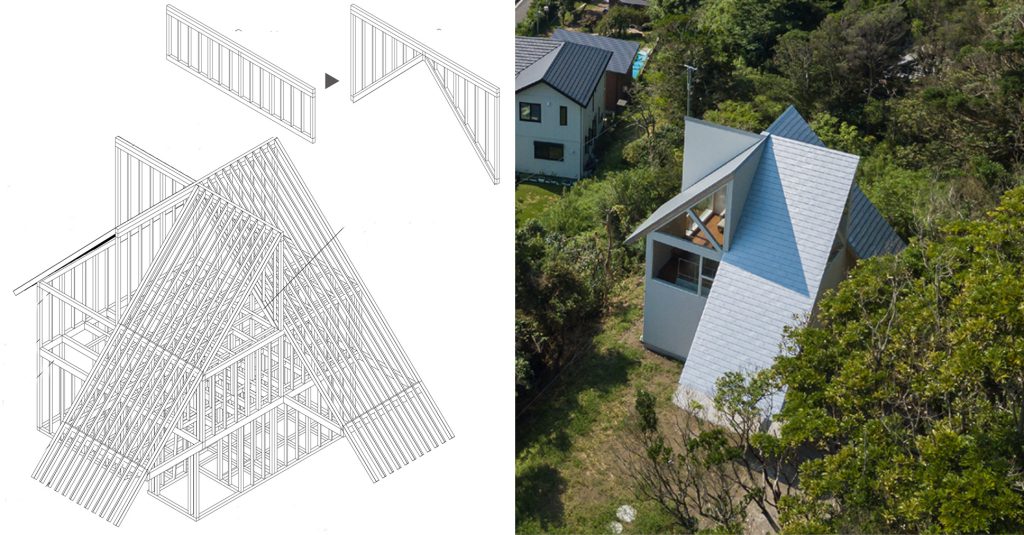Architizer’s 13th A+Awards features a suite of sustainability-focused categories recognizing designers that are building a greener industry — and a better future. Start your entry to receive global recognition for your work!
The word “minka” refers to vernacular houses commonly found in rural Japan. Though the term historically referred to the homes of farmers, artisans and merchants (non-samurai castes), in the 21st century, it can be used to describe any residence built in one of a number of orthodox styles.
The Edo period, 1603 to 1868, introduced several designs to this glossary of farmhouse types, including gasshō-zukuri. An everyday sight in regions such as Gifu prefecture, central Japan, these buildings are not dissimilar to those found in Alpine Europe. Typified by steep extended roofs conceived to look like two hands in prayer, authentic construction involves no nails or screws, with individual elements instead slotting into place.
There are several reasons for the approach. Many corners of Japan are known for heavy snowfall in winter and precipitation throughout the year, including powerful typhoons. The elongated gable design does its best to push rain and snow off and away from the building, and these sides are often positioned in such as way as to act as a windbreaker.
The blueprint also means conditions inside the structure are more consistent and self-regulating, reducing the need to rely on heating or cooling to moderate temperatures, exposing inhabitants, furniture, furnishing and fittings to less direct sunlight, extending the time between repairs, refurbishments and replacements.
More than anything, though, gasshō-zukuri is not confined to the past. Today, orthodontic offices, suburban restaurants, private residences and remote working retreats look to this aesthetic for practicality and beauty, the striking impact yet ability to complement heritage and remote locations. Here are 9 contemporary Japanese designs defined by their extended eaves which prove our point.
Komonokaen
By Tatsuya Kawamoto + Associates, Japan
Popular Choice Winner, Retail, 12th Annual A+Awards
 Florist, plant shop, cafe. More than just a retail complex in a touristic area, Komonokaen responds to the client’s desire to “create a new landmark space” for the locality with a timber roof that juts out beyond the walls. Covered in 20,000 pieces of stone sourced from nearby, the use of local artisan labour, materials and design accentuates the strong regional identity that plays a big part in driving visitor numbers.
Florist, plant shop, cafe. More than just a retail complex in a touristic area, Komonokaen responds to the client’s desire to “create a new landmark space” for the locality with a timber roof that juts out beyond the walls. Covered in 20,000 pieces of stone sourced from nearby, the use of local artisan labour, materials and design accentuates the strong regional identity that plays a big part in driving visitor numbers.
Hara House
By EA Research and Design Office / Takeru Shoji, Nagaoka, Japan
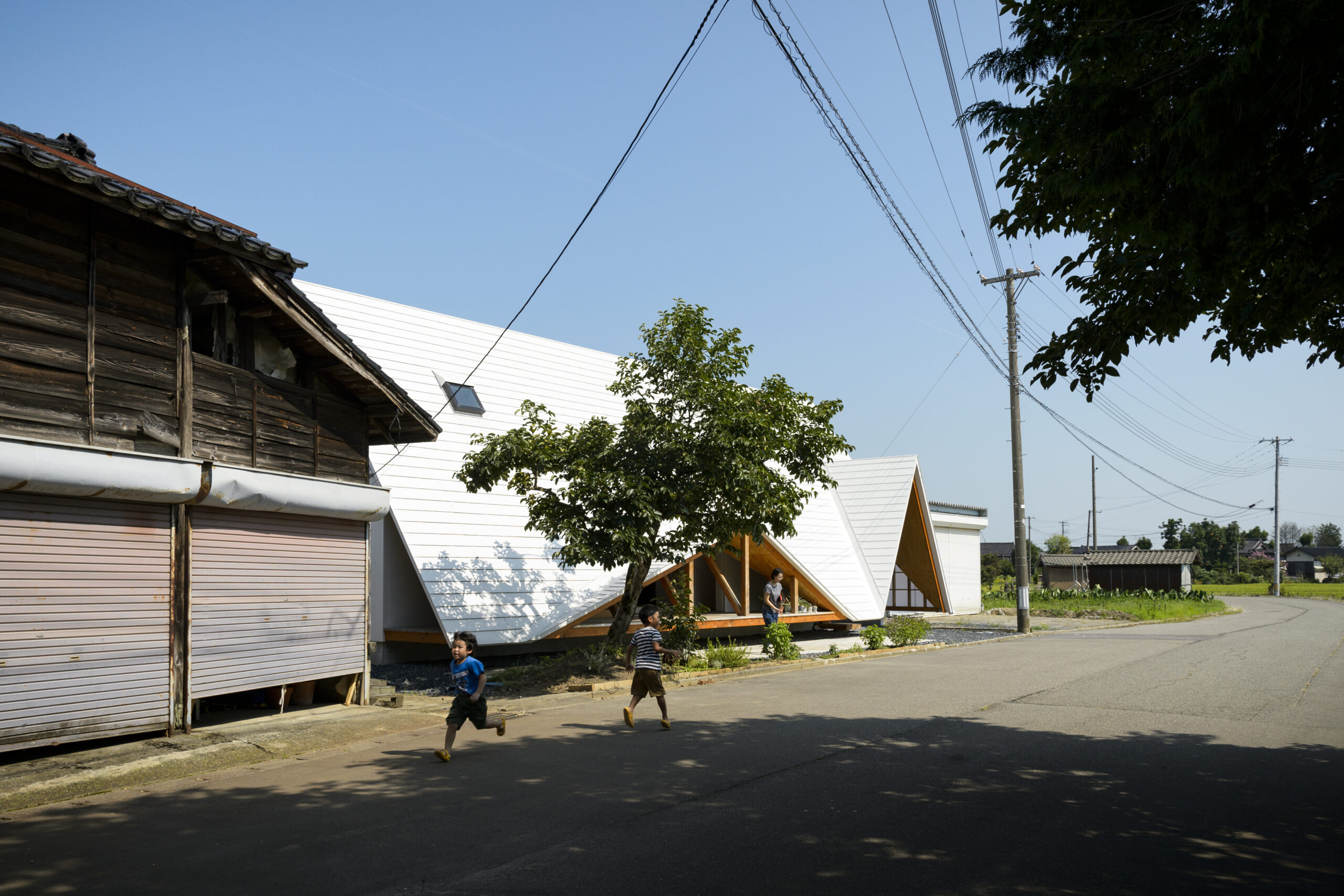
 Modern minimalism revitalizes the traditional rural community through a hang-out for friends, family and the residents of an old countryside estate. Boasting covered porch for chitchatting with passing neighbors, and a number of open spaces born to host, it’s a pro-active, sociable response to the decline and isolation places like this outlying settlement near Nagaoka, where Hara House is located, are experiencing gasshō-zukuri in the age of urbanization.
Modern minimalism revitalizes the traditional rural community through a hang-out for friends, family and the residents of an old countryside estate. Boasting covered porch for chitchatting with passing neighbors, and a number of open spaces born to host, it’s a pro-active, sociable response to the decline and isolation places like this outlying settlement near Nagaoka, where Hara House is located, are experiencing gasshō-zukuri in the age of urbanization.
House for Marebito
By VUILD, Toyama, Japan

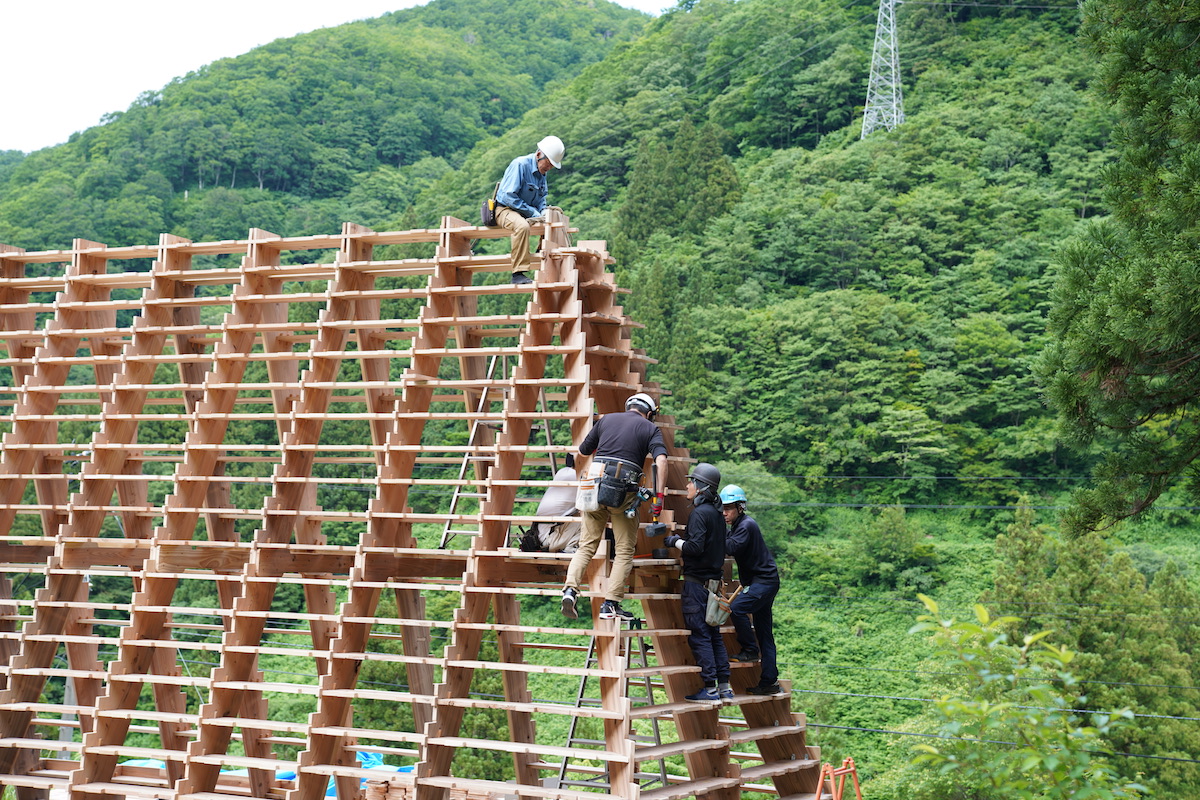 Another project inspired by rural population loss, and then the Covid-19 triggered rush for remote working from remote locations, House for Marebito updates the gasshō-zukuri principle to raise a bridge between traditional home and temporary accommodation, with each address crowdfunded and shared between investors.
Another project inspired by rural population loss, and then the Covid-19 triggered rush for remote working from remote locations, House for Marebito updates the gasshō-zukuri principle to raise a bridge between traditional home and temporary accommodation, with each address crowdfunded and shared between investors.
Futtsu Weekend House
By Atelier MEME, Chiba, Japan
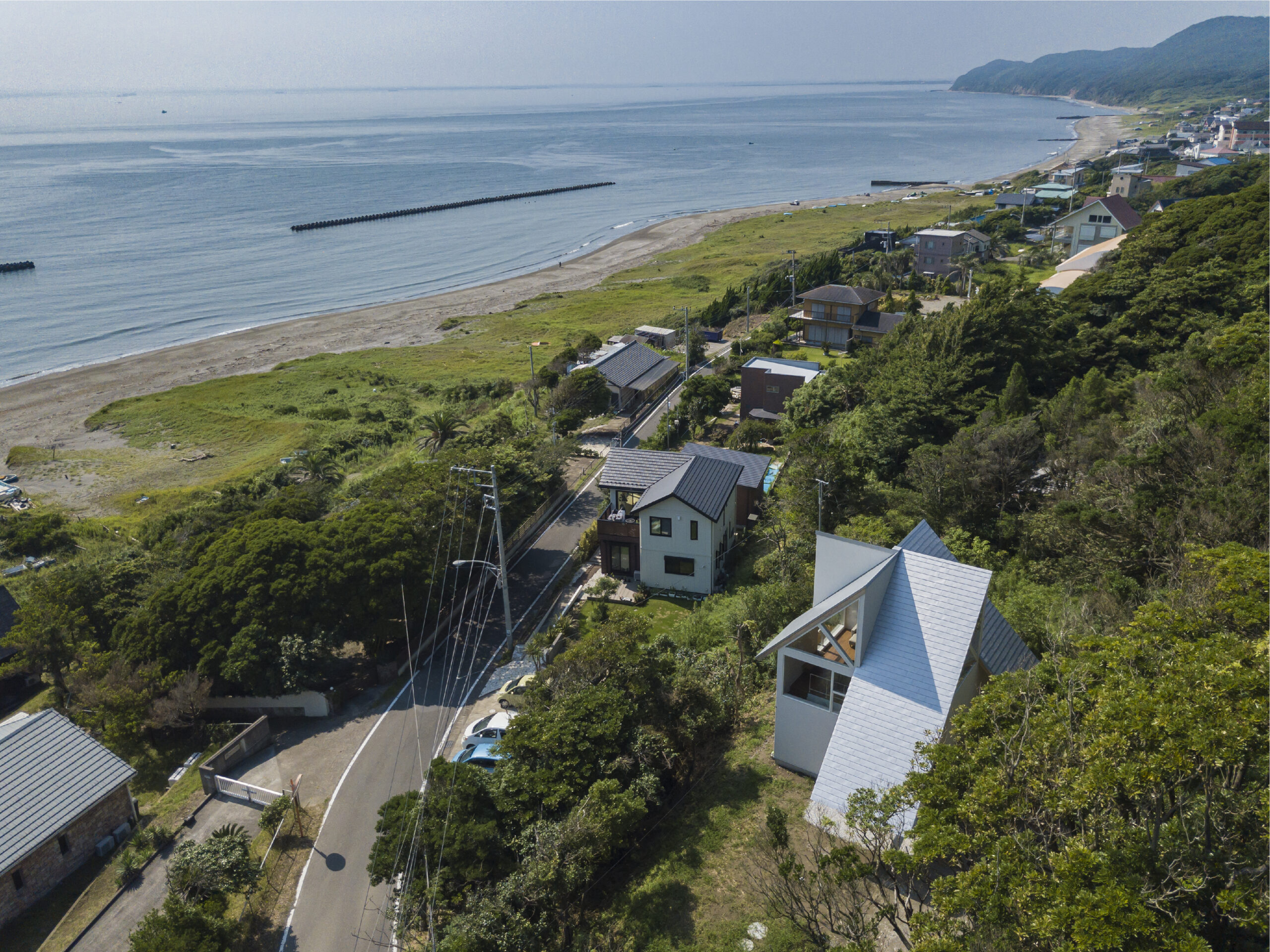
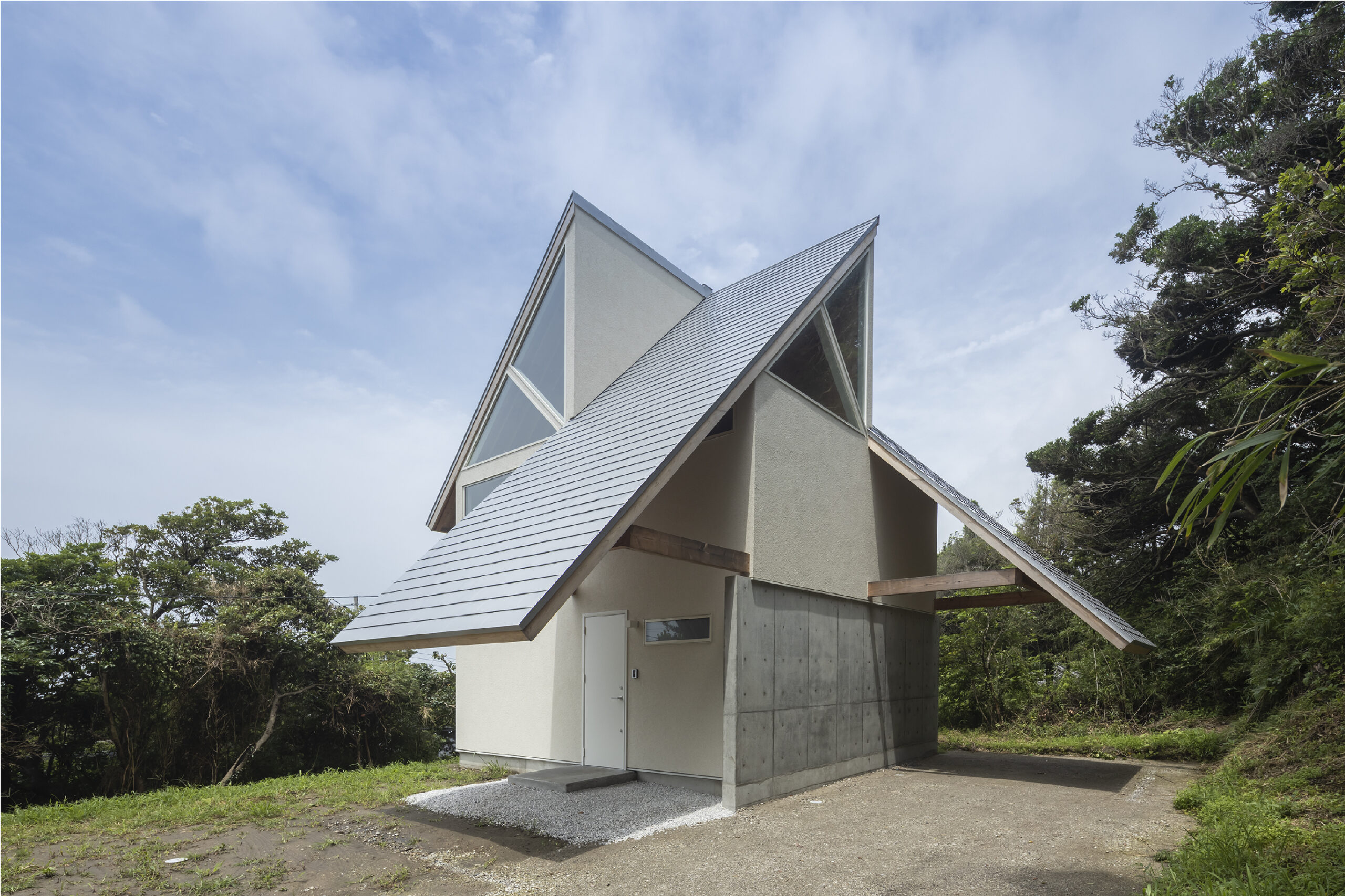
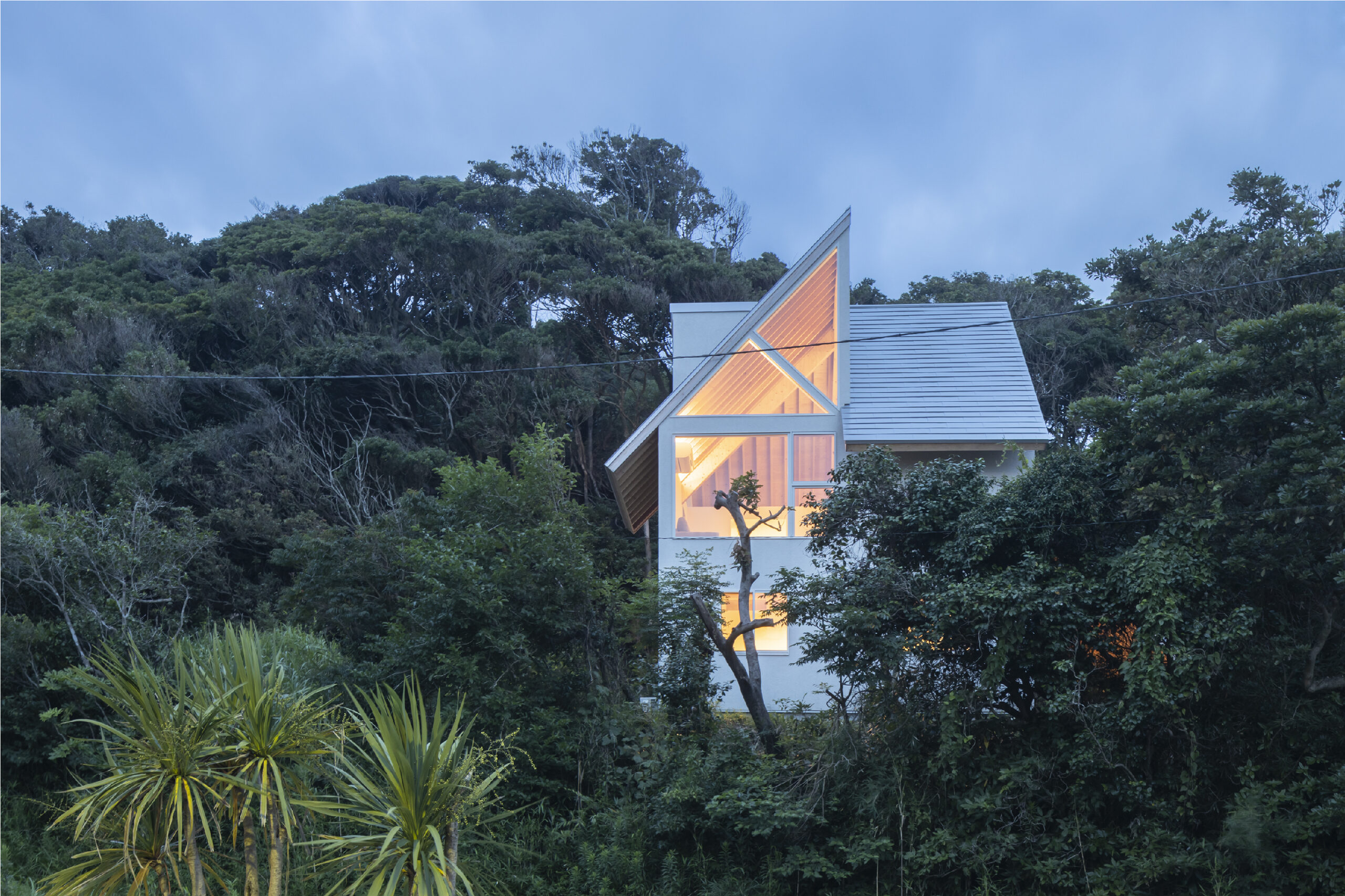 Earlier iterations focused on winding walls and expansive openings; however, soon this approach was seen as a fixation on boundaries. Since the aim was to develop new relationships with the building’s surroundings, a dynamic roof — divided into four sections, each lengthened towards the ground — became a jumping-off point. Generous spaces are formed beneath the extended eaves.
Earlier iterations focused on winding walls and expansive openings; however, soon this approach was seen as a fixation on boundaries. Since the aim was to develop new relationships with the building’s surroundings, a dynamic roof — divided into four sections, each lengthened towards the ground — became a jumping-off point. Generous spaces are formed beneath the extended eaves.
Ushimaru Restaurant
By Axel Vansteenkiste Architecture, Matsuomachi Kigatana, Sammu, Japan
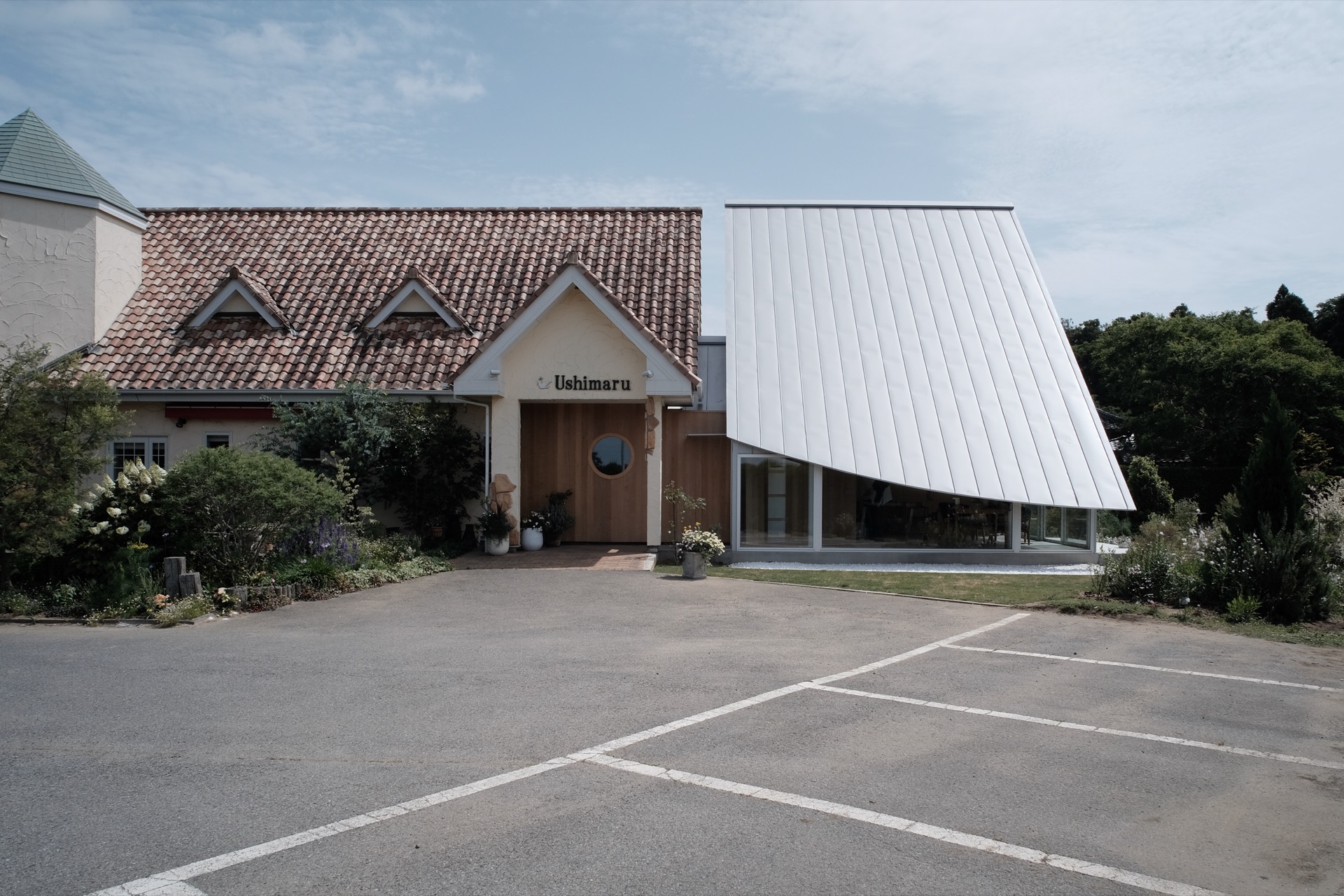

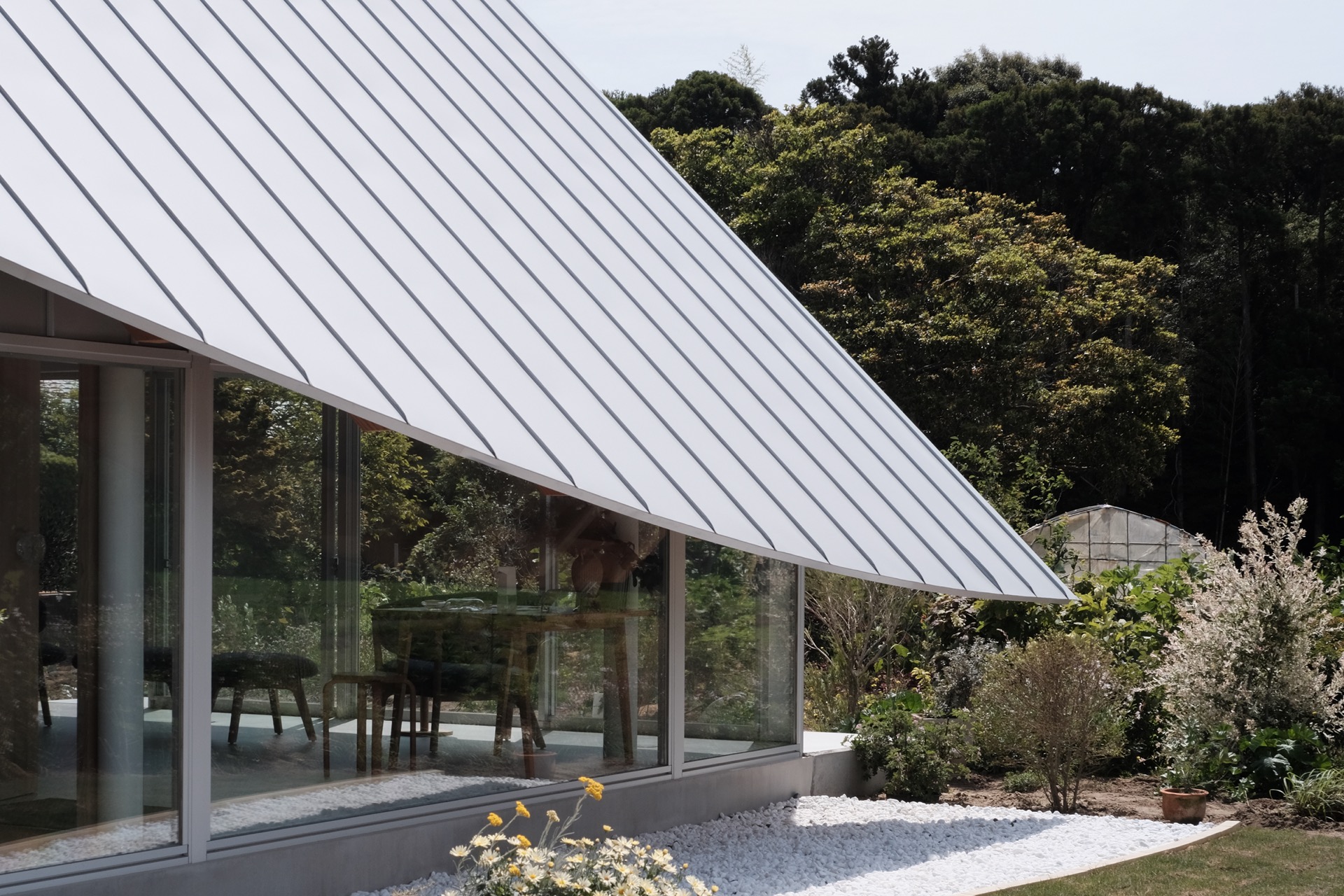 Axel Vansteenkiste says the design for Ushimaru Restaurant is “European-style.” The Ghent, Belgium trained architect clearly has plenty of Flemish overhangs to call on for inspiration, although here things are more in keeping with traditional local designs. That 45-degree pitched roof is a bold feature, which beautifully encloses the new interior lounge area with striking overall effect.
Axel Vansteenkiste says the design for Ushimaru Restaurant is “European-style.” The Ghent, Belgium trained architect clearly has plenty of Flemish overhangs to call on for inspiration, although here things are more in keeping with traditional local designs. That 45-degree pitched roof is a bold feature, which beautifully encloses the new interior lounge area with striking overall effect.
Toyohashi Orthodontic Office
By TSC Architects, Aichi, Japan
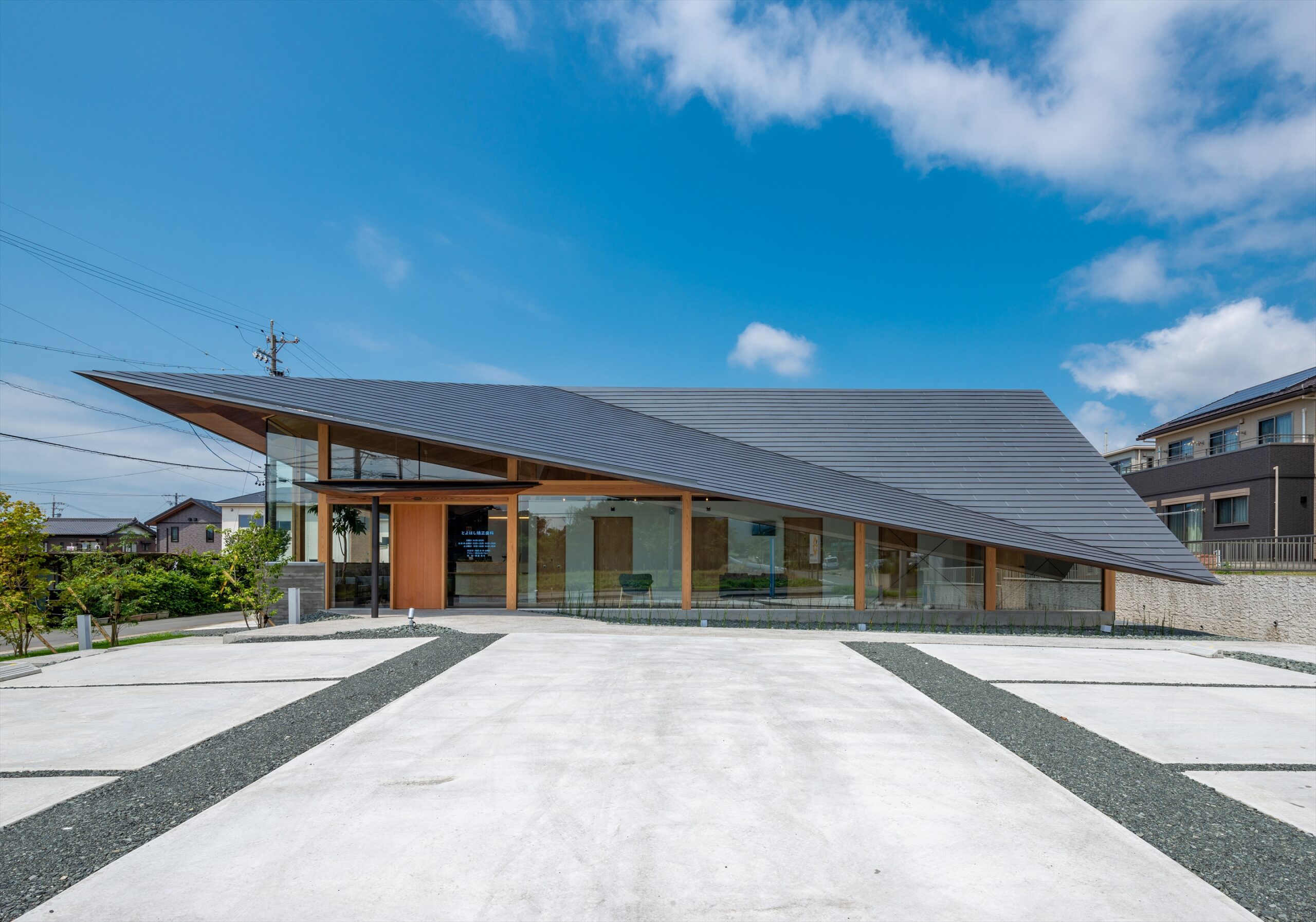
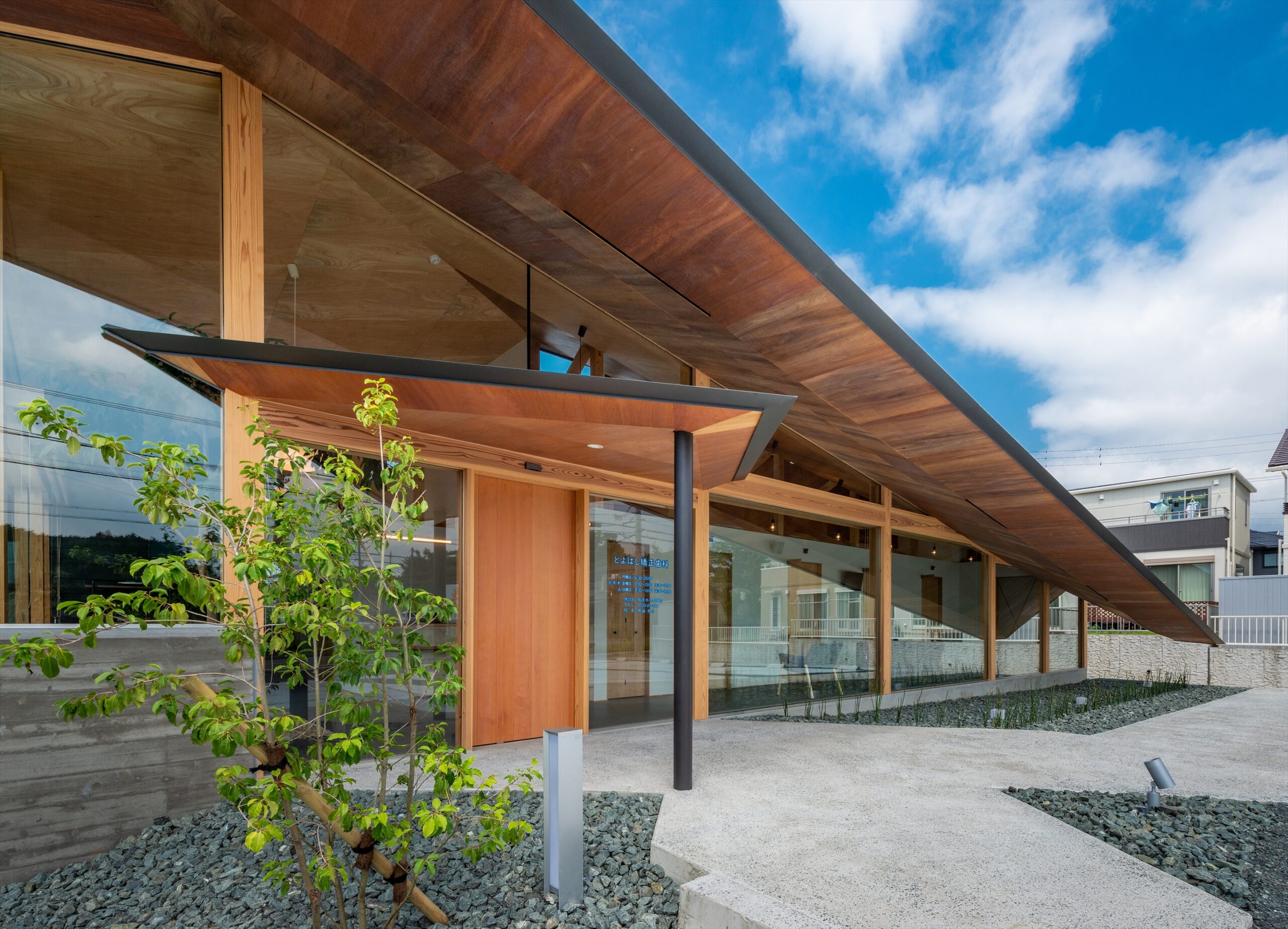
 The Toyohashi Orthodontic Office is about using gasshō-zukuri to break with tradition, rather than celebrate it. In Aichi, typical buildings have become “standardized”, so here the emphasis is on disrupting uniformity through a series of triangular roof sections extending beyond the structure and transparent lower facade. The result is a series of differently-angled viewpoints of the surrounding city.
The Toyohashi Orthodontic Office is about using gasshō-zukuri to break with tradition, rather than celebrate it. In Aichi, typical buildings have become “standardized”, so here the emphasis is on disrupting uniformity through a series of triangular roof sections extending beyond the structure and transparent lower facade. The result is a series of differently-angled viewpoints of the surrounding city.
Sayama Forest Chapel
By Hiroshi Nakamura & NAP, Tokorozawa, Japan


 A space for reflection at the Sayama Lakeside Cemetery, Sayama Forest Chapel is protected from the threat of heavy downpours, but it also looks to safeguard the environment with those inward sloping walls chosen in a bid to avoid uprooting existing trees. Externally, the ground-to-vanishing point roofs performs another role, too, pulling eyes high into the forest canopy and out “towards the departed,” focusing minds on those we want to remember within this stunning setting
A space for reflection at the Sayama Lakeside Cemetery, Sayama Forest Chapel is protected from the threat of heavy downpours, but it also looks to safeguard the environment with those inward sloping walls chosen in a bid to avoid uprooting existing trees. Externally, the ground-to-vanishing point roofs performs another role, too, pulling eyes high into the forest canopy and out “towards the departed,” focusing minds on those we want to remember within this stunning setting
SANU 2nd HOME
By ADX inc., Japan
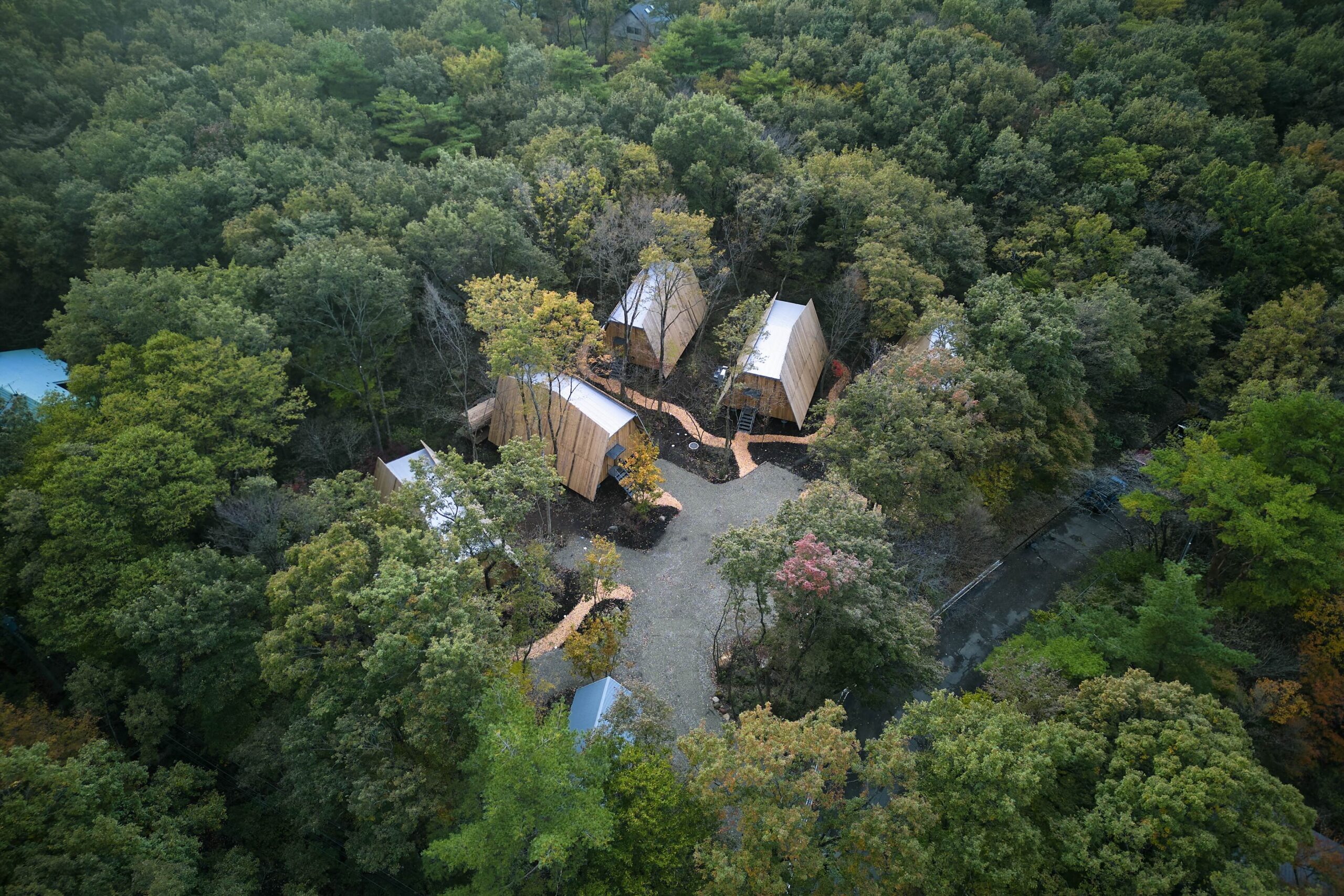
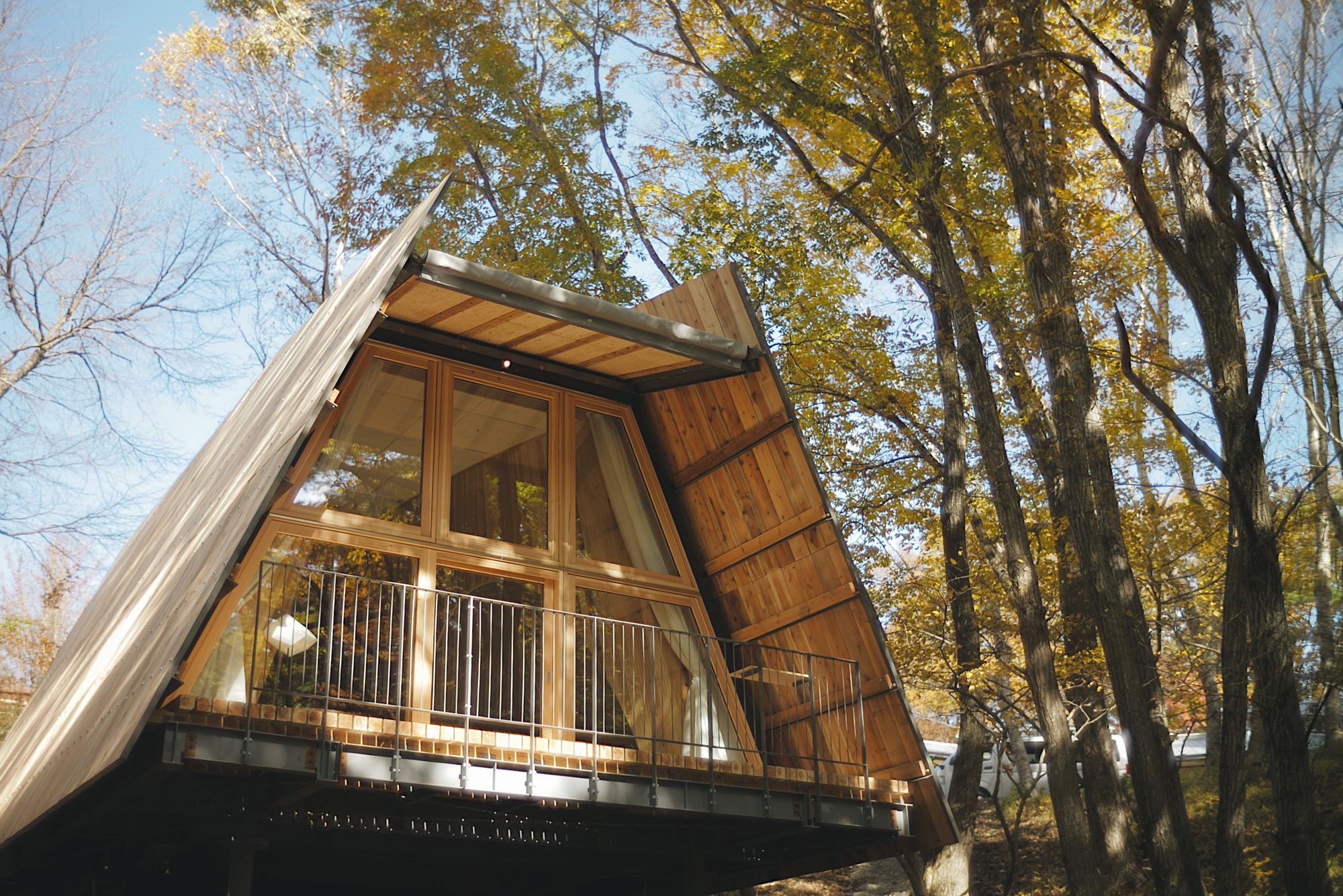 “Live within nature” is the tagline of SANU 2nd Home, a Japanese remote working property firm that offers professionals the opportunity to escape into the woods for a quietly motivating change of pace. The gasshō-zukuri-style roof forms part of a wider building system mimicking a beehive, too, its honeycomb nature adding strength and stability to a relatively basic cabin structure.
“Live within nature” is the tagline of SANU 2nd Home, a Japanese remote working property firm that offers professionals the opportunity to escape into the woods for a quietly motivating change of pace. The gasshō-zukuri-style roof forms part of a wider building system mimicking a beehive, too, its honeycomb nature adding strength and stability to a relatively basic cabin structure.
Self-built Shinto Shrine in a Depopulated Village in Japan
By D Environmental Design System Laboratory, Tosayamadacho Nakagonyu, Kami, Japan
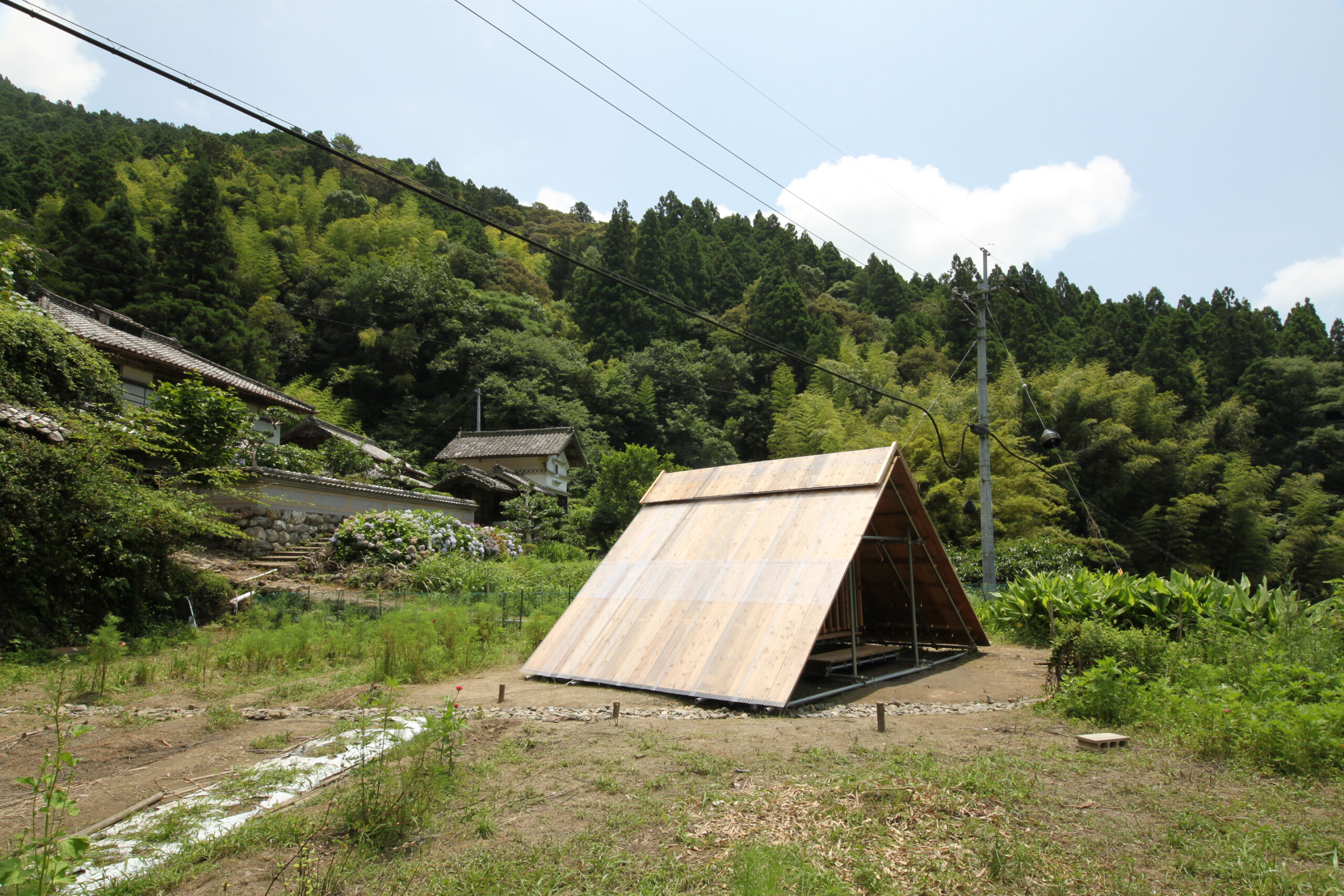
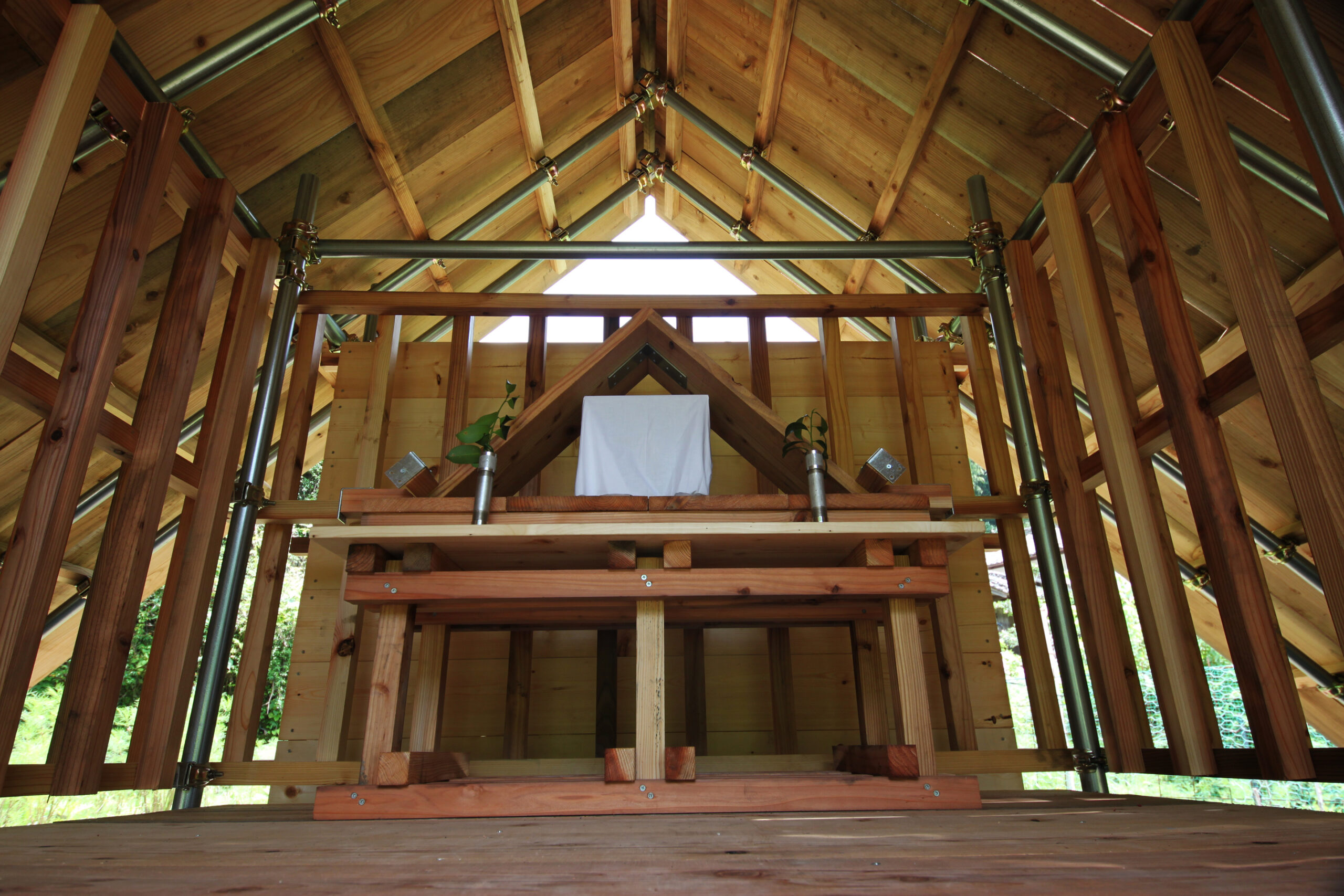
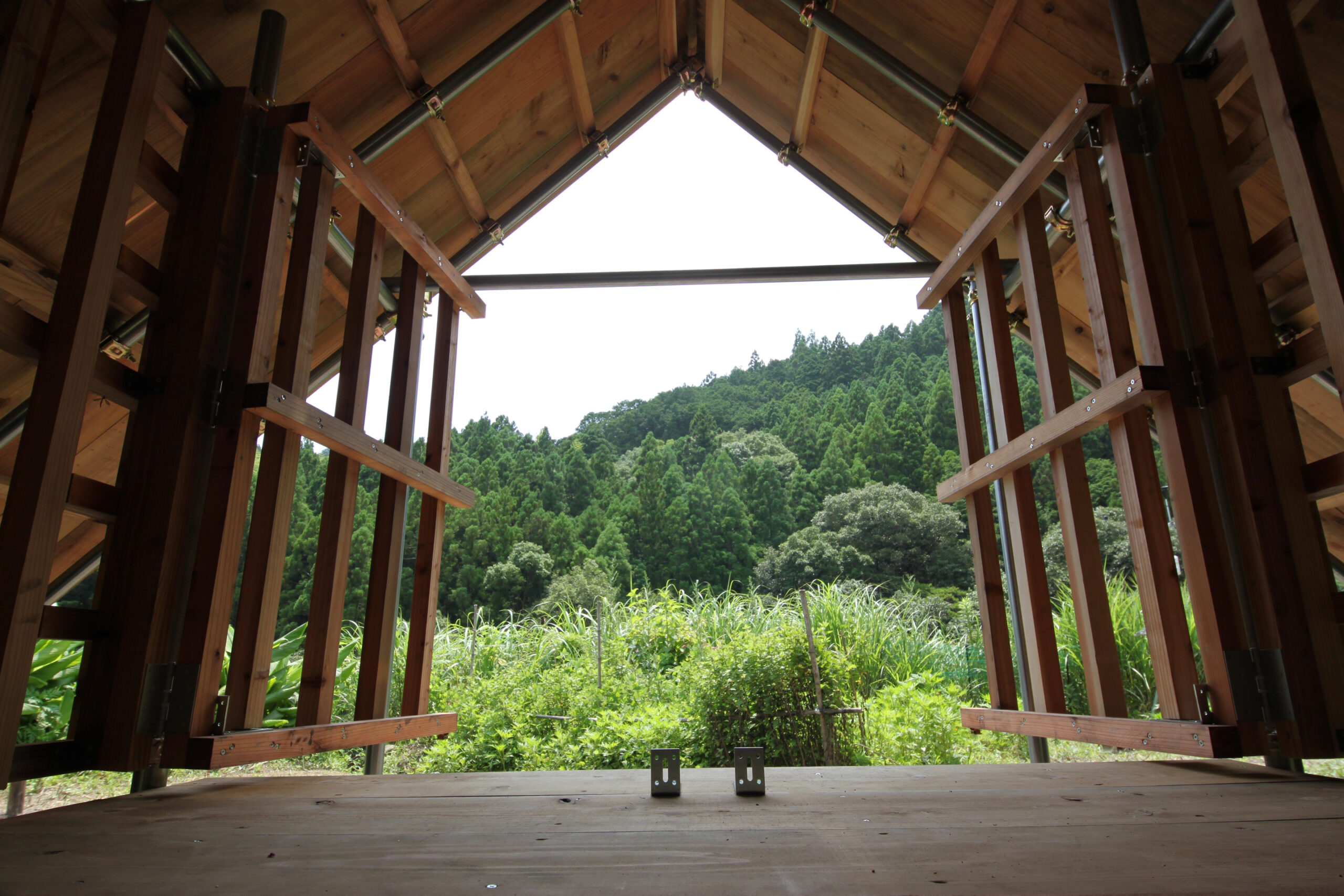 Tosayamadacho Nakagonyu has been home to a kanamine shinto community for more than 200 years. Like so many hamlets across the globe, the number of residents has been in decline for years, and in 2015 the one remaining house and nearby shrine suffered typhoon damage. Ten students from nearby Kochi University of Technology and the villagers rebuilt the sacred site using gasshō-zukuri principles.
Tosayamadacho Nakagonyu has been home to a kanamine shinto community for more than 200 years. Like so many hamlets across the globe, the number of residents has been in decline for years, and in 2015 the one remaining house and nearby shrine suffered typhoon damage. Ten students from nearby Kochi University of Technology and the villagers rebuilt the sacred site using gasshō-zukuri principles.
Air House
By IFOO, Kagoshima, Japan

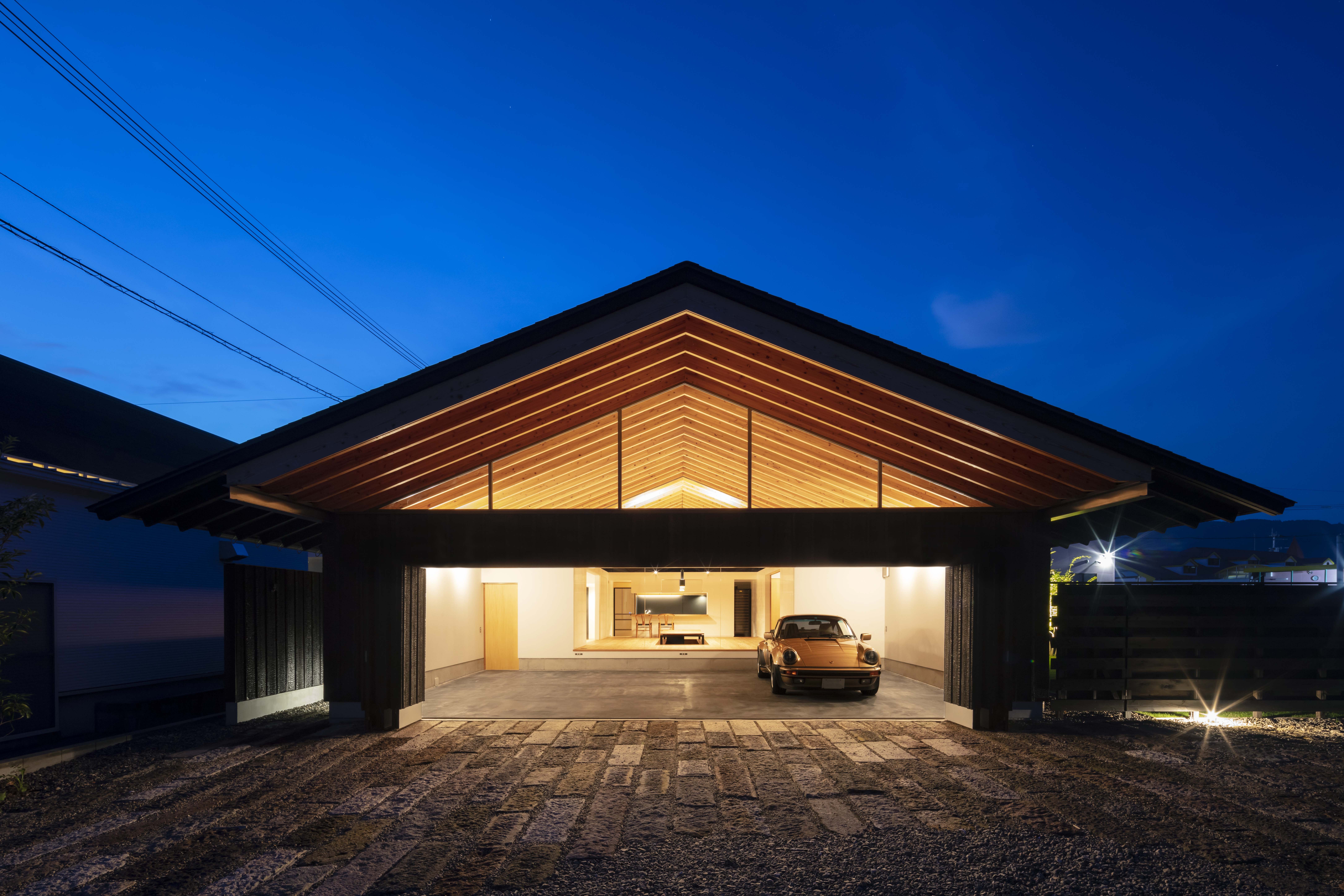
 Taking open plan to another level, the Air House celebrates transparency in the literal sense. Huge spaces are dedicated to the non-living areas, while tiny home principles are introduced to bring living quarters into cozier proximity, with floor-to-extended roof glass wall providing a transition into the neighbouring field, creating the kind of high-impact view residential architects would be hard pushed to better.
Taking open plan to another level, the Air House celebrates transparency in the literal sense. Huge spaces are dedicated to the non-living areas, while tiny home principles are introduced to bring living quarters into cozier proximity, with floor-to-extended roof glass wall providing a transition into the neighbouring field, creating the kind of high-impact view residential architects would be hard pushed to better.
Architizer’s 13th A+Awards features a suite of sustainability-focused categories recognizing designers that are building a greener industry — and a better future. Start your entry to receive global recognition for your work!

